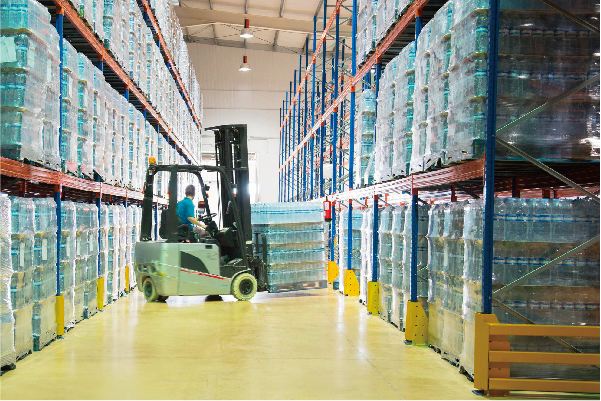Challenges Faced by China's Corporate Sector: A Closer Look
China's GDP growth rate has been steady, with a 5.2% increase in 2023 and a further 5.3% growth in the first quarter of 2024. Considering this positive economic trend, one would expect the publicly traded companies, which form the backbone of China's corporate sector, to be experiencing even faster growth. However, the reality proves to be quite the opposite.
Data from various brokerages consistently indicates a different picture. For instance, one prominent brokerage reports that overall A-share profitability decreased by 1.4% year-on-year in 2023, with the non-financial sector experiencing a decline of 3.3%. By the first quarter of 2024, A-share earnings had fallen even further, dropping by 4.3% year-on-year, with the non-financial sector down 5.1%.
Another brokerage, using a slightly different approach, excluding financials and petroleum and petrochemicals, reveals that A-share net attributable profits had declined by 3.69% year-on-year in 2023 and 5.62% year-on-year in the first quarter of 2024.
Curiously, the financial sector seems to fare better in comparison. This is attributed to the use of a "magic weapon" by banks, known as the provision ratio, which effectively smooths out profits. The provision ratio represents the balance between loan loss provisioning and loan balance. Further elaboration on this topic will be discussed later in the article.
To validate the aforementioned data, two additional perspectives will be examined: Real Estate Investment Trusts (REITs) and the banking sector.
REITs offer insights into the operation of real assets, including industrial parks, logistics warehouses, and highways. While operating results can be manipulated at the company level, the asset perspective provides a more accurate representation.
Industrial park REITs faced numerous challenges in the previous year, as reflected in their annual reports. Instances such as the withdrawal of Tetsuku leases by Zhangjiang Industrial Park REIT and the significant decline in occupancy rates from 96% at the beginning of 2022 to 64% by the end of 2023 for Jianxin Zhongguancun REIT indicate a considerable number of corporate tenants not renewing leases, withdrawing leases, or downsizing their space.
Similar difficulties were observed for logistics and warehousing REITs. The annual report of Hongtu Yantian Port REIT highlights the impact of project delays and weak domestic and foreign trade demand, leading to a supply peak in logistics real estate in China in 2023.
Highway REITs exhibited clear differentiation based on the type of traffic. Passenger cars, representing residential consumption, showed better recovery, while trucks, indicative of economic conditions, performed relatively weakly.
Banks serve as another validation point, as they play a crucial role in the Chinese economy, acting as a transfusion of funds. While the direct financing ratio is no longer the primary focus, the banking sector's significance remains unwavering.
Statistics from Caixin reveal that the average year-on-year revenue growth rate of the six major banks (China Agriculture, Industry, Construction, Transportation, and Post) in 2023 was 0.58%, a decline of 0.47 percentage points compared to the previous year. Notably, the Industrial and Commercial Bank of China (ICBC) and the Construction Bank of China (CBC) experienced negative year-on-year revenue growth.
the average year-on-year net attributable profit growth rate for these six banks was 1.91%, down 4.78 percentage points from the previous year's growth rate. The faster growth in net profit can be attributed to the effective use of the provision rate, with ICBC, CCB, ABC, CBI, and Postal Savings Bank recording asset impairment losses of 17.4%, 11.5%, 6.6%, 5.8%, and 26% year-on-year, respectively. Thus, the volatility in net profit was successfully mitigated by these fluctuations.
China's corporate sector faces numerous challenges despite the positive GDP growth. Publicly traded companies have experienced a decline in profitability, while REITs, particularly those associated with industrial parks, logistics warehouses, and highways, have encountered difficulties due to various factors. The banking sector remains crucial for the Chinese economy, but maintaining stability and increasing dividend payments amidst weak expectations, insufficient demand, and declining spreads presents a significant challenge.
Data from various brokerages consistently indicates a different picture. For instance, one prominent brokerage reports that overall A-share profitability decreased by 1.4% year-on-year in 2023, with the non-financial sector experiencing a decline of 3.3%. By the first quarter of 2024, A-share earnings had fallen even further, dropping by 4.3% year-on-year, with the non-financial sector down 5.1%.
Another brokerage, using a slightly different approach, excluding financials and petroleum and petrochemicals, reveals that A-share net attributable profits had declined by 3.69% year-on-year in 2023 and 5.62% year-on-year in the first quarter of 2024.
Curiously, the financial sector seems to fare better in comparison. This is attributed to the use of a "magic weapon" by banks, known as the provision ratio, which effectively smooths out profits. The provision ratio represents the balance between loan loss provisioning and loan balance. Further elaboration on this topic will be discussed later in the article.
To validate the aforementioned data, two additional perspectives will be examined: Real Estate Investment Trusts (REITs) and the banking sector.
REITs offer insights into the operation of real assets, including industrial parks, logistics warehouses, and highways. While operating results can be manipulated at the company level, the asset perspective provides a more accurate representation.
Industrial park REITs faced numerous challenges in the previous year, as reflected in their annual reports. Instances such as the withdrawal of Tetsuku leases by Zhangjiang Industrial Park REIT and the significant decline in occupancy rates from 96% at the beginning of 2022 to 64% by the end of 2023 for Jianxin Zhongguancun REIT indicate a considerable number of corporate tenants not renewing leases, withdrawing leases, or downsizing their space.
Similar difficulties were observed for logistics and warehousing REITs. The annual report of Hongtu Yantian Port REIT highlights the impact of project delays and weak domestic and foreign trade demand, leading to a supply peak in logistics real estate in China in 2023.
Highway REITs exhibited clear differentiation based on the type of traffic. Passenger cars, representing residential consumption, showed better recovery, while trucks, indicative of economic conditions, performed relatively weakly.
Banks serve as another validation point, as they play a crucial role in the Chinese economy, acting as a transfusion of funds. While the direct financing ratio is no longer the primary focus, the banking sector's significance remains unwavering.
Statistics from Caixin reveal that the average year-on-year revenue growth rate of the six major banks (China Agriculture, Industry, Construction, Transportation, and Post) in 2023 was 0.58%, a decline of 0.47 percentage points compared to the previous year. Notably, the Industrial and Commercial Bank of China (ICBC) and the Construction Bank of China (CBC) experienced negative year-on-year revenue growth.
the average year-on-year net attributable profit growth rate for these six banks was 1.91%, down 4.78 percentage points from the previous year's growth rate. The faster growth in net profit can be attributed to the effective use of the provision rate, with ICBC, CCB, ABC, CBI, and Postal Savings Bank recording asset impairment losses of 17.4%, 11.5%, 6.6%, 5.8%, and 26% year-on-year, respectively. Thus, the volatility in net profit was successfully mitigated by these fluctuations.
China's corporate sector faces numerous challenges despite the positive GDP growth. Publicly traded companies have experienced a decline in profitability, while REITs, particularly those associated with industrial parks, logistics warehouses, and highways, have encountered difficulties due to various factors. The banking sector remains crucial for the Chinese economy, but maintaining stability and increasing dividend payments amidst weak expectations, insufficient demand, and declining spreads presents a significant challenge.




 Follow us on Wechat
Follow us on Wechat